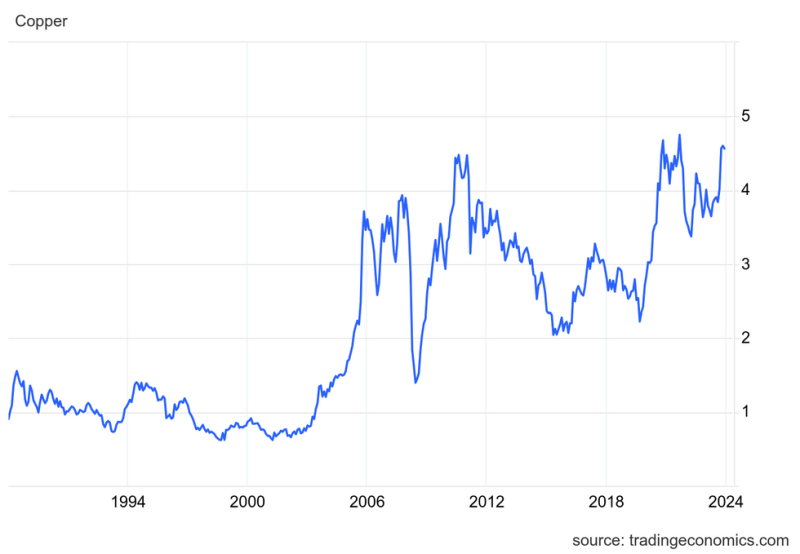The historical trends of copper prices have always been a subject of interest for investors, economists, and industrialists alike. Understanding the past performance of copper prices can provide valuable insights into the future direction of the commodity market and overall economic health. Let’s delve into a comprehensive analysis of historical copper prices up to 2024.
Copper, often dubbed as Doctor Copper for its ability to gauge the overall health of the global economy, has a rich history of price fluctuations influenced by a myriad of factors ranging from market demand and supply dynamics to geopolitical events and macroeconomic indicators. The timeline of copper prices reflects its intrinsic value as a widely used metal in various industries, especially in construction, manufacturing, and electronics.
In the early 2000s, copper prices experienced a significant surge driven by robust demand from emerging economies like China and India. The global economic boom coupled with rapid industrialization fueled a bull run in copper prices, with the metal reaching all-time highs around $4.50 per pound in 2011. However, the euphoria was short-lived as the commodity market faced a sharp correction following the global financial crisis of 2008.
The aftermath of the financial crisis saw copper prices tumble to around $2 per pound, reflecting the severe impact of the economic downturn on industrial activity and demand for commodities. The subsequent years witnessed a gradual recovery in copper prices, buoyed by stimulus measures and infrastructure spending by governments worldwide.
The period up to 2020 was marked by a relatively stable trend in copper prices, hovering around the $2.50-$3 per pound range. However, the onset of the COVID-19 pandemic in early 2020 sent shockwaves across the global economy, triggering a sharp decline in copper prices as lockdowns disrupted supply chains and industrial production.
As the world grappled with the economic fallout of the pandemic, governments and central banks unleashed massive stimulus packages to support businesses and revive growth, leading to a rebound in copper prices. By mid-2021, copper prices surged to over $4 per pound, underpinned by strong demand from the construction and renewable energy sectors.
Looking ahead to 2024, the outlook for copper prices is poised to be driven by a host of factors such as economic growth prospects, infrastructure investments, technological advancements, and sustainable energy transitions. The transition towards electric vehicles and renewable energy sources is expected to bolster copper demand in the coming years, emphasizing its pivotal role in the green economy.
In conclusion, the historical trajectory of copper prices underscores the cyclical nature of commodity markets and the interconnectedness of global economic forces. By studying past price movements and identifying key drivers, stakeholders can make informed decisions and navigate the dynamic landscape of the copper market with clarity and foresight
*.Sources: https://godzillanewz.com/a-look-at-historical-copper-prices-updated-2024/*

